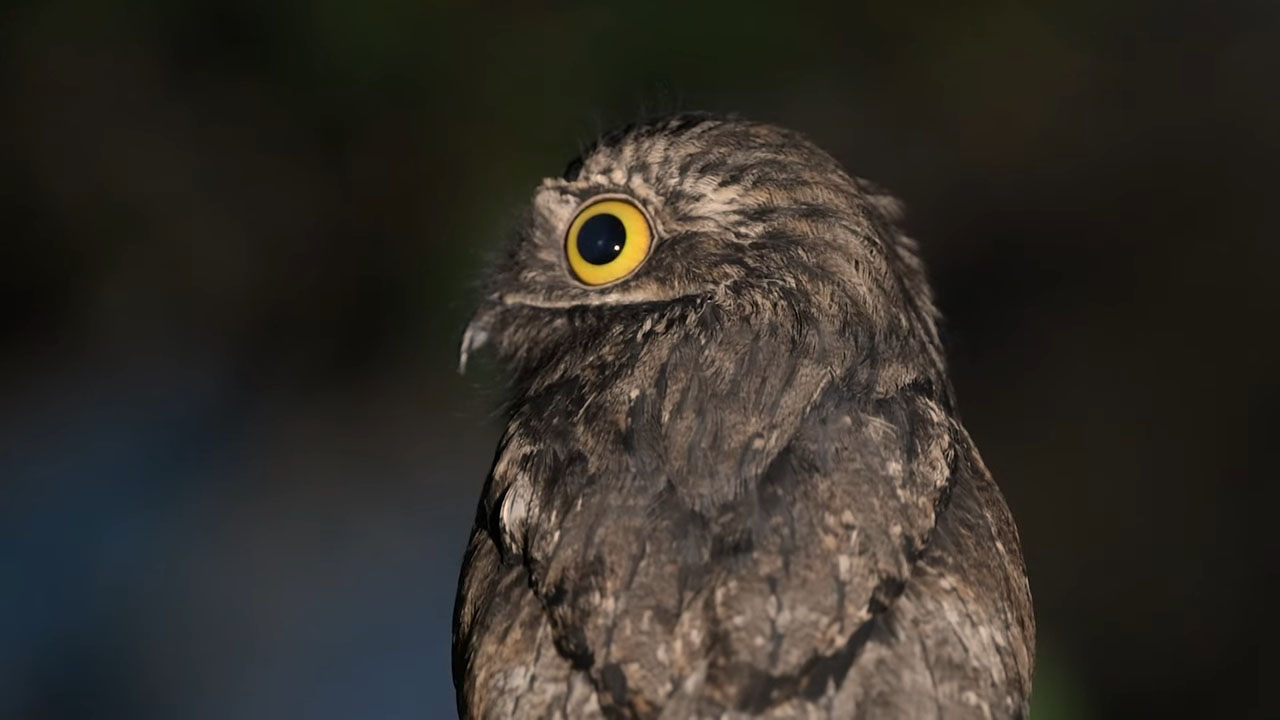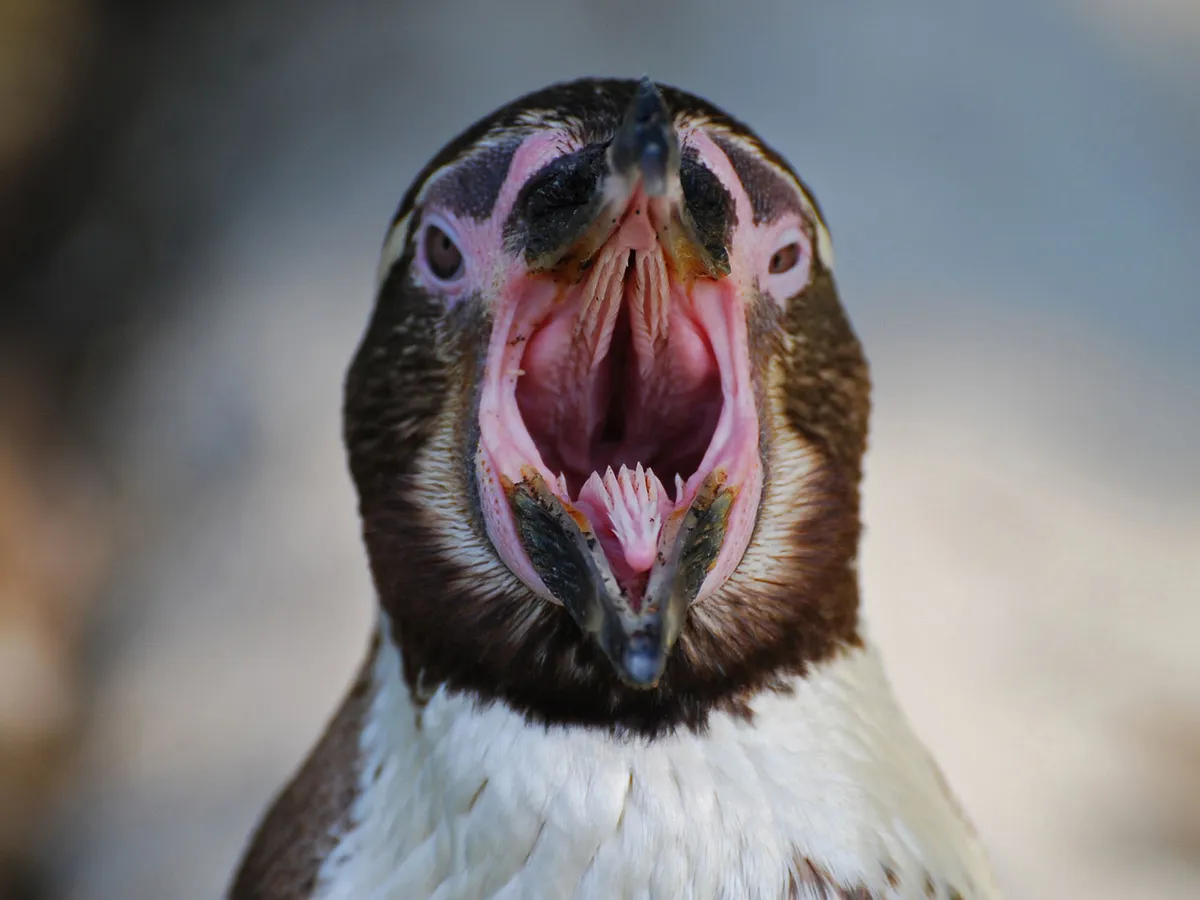
Share Post:
When you think of a penguin, the image of its tuxedo-like feathers and waddling walk may come to mind, but what’s inside a penguin’s mouth reveals a much more fascinating story. Penguins have a unique oral structure that enables them to thrive in their aquatic environment.
From spiny structures to specialized glands, their mouths are designed for gripping slippery prey and surviving in harsh climates. Let’s explore the different aspects of a penguin’s mouth in more detail.
The Terrifying Appearance of Penguin Mouths
While penguins are often seen as harmless, waddling creatures, a peek inside their mouths reveals a different story. The inside of a penguin’s mouth is lined with large, spiny structures called papillae that can be unsettling to anyone who looks.
Spiny Papillae Are Not as Sharp as They Appear
- Material Composition: They are made of keratin, the same material found in human nails and hair, giving them strength without a cutting edge. This allows the penguin to handle its slippery prey without harming itself.
The papillae may look menacing, but they are soft and harmless to humans. Penguins themselves pose little threat unless provoked.
- Backward-Facing Spines: Ensures that once a penguin grabs its prey, there is no chance for escape. The prey, typically fish or krill, gets caught in this natural trap and is guided directly toward the penguin’s throat.
- Gripping Slippery Prey: Fish and other sea creatures are notoriously difficult to handle due to their slippery texture. The papillae allow penguins to firmly grip their prey without the need for teeth, ensuring it can be swallowed whole.
Penguins are not alone in possessing papillae. Many other marine animals, such as sea turtles and some species of fish, have similar spines inside their mouths for capturing and filtering food.
Also, if you want to read more interesting facts about birds, check out Why owls have long legs.
The Anatomy of Penguin Mouth
| Papillae | Gripping slippery prey | Found on the tongue, roof, and base of the mouth |
| Beak | Catching and manipulating prey | Sharp and pointed, used for nipping and grabbing |
| Tongue | Moving prey toward the throat | Muscular, covered in papillae |
| Mucus Glands | Moistening the mouth and aiding swallowing | Protects against injury and infection |
| Taste Buds | Detecting salty and sour flavors | Located at the base of the tongue |
| Salt Glands | Excreting excess salt from seawater ingestion | Located above the eyes |
Penguins do not have teeth. Instead, their mouths are equipped with spiny structures known as papillae. These sharp, backward-facing spikes cover the inside of the penguin’s mouth, including the tongue, roof, and base. Their primary function is to secure prey like fish and krill. Once a penguin catches its prey, the papillae ensure that it cannot slip out, guiding the food straight into the throat. This is crucial for penguins, who often feed on slippery marine life.
Although penguins do not chew their food, the papillae act as miniature barbs, gripping and moving the prey to the back of the mouth. The tongue also plays an important role, in manipulating food and assisting with swallowing. The beak, often pointed and sharp, works in tandem with the papillae to capture prey in the water.
Differences Among Penguin Species
While all penguins have spiny papillae inside their mouths, the size and placement vary.
Fish-Eating Penguins and Adaptations for Prey
Penguins that rely on catching slippery, fast-moving prey like fish have longer and more pronounced spiny papillae inside their mouths. They also have sharper beaks, making it easier to grab fish quickly during the hunt.
Krill and Plankton Feeders
Penguins that feed on krill, plankton, or other small invertebrates have a different mouth structure. Their papillae are designed more for guiding food into the throat rather than securing larger, slippery prey.
The Penguin Tongue
The penguin tongue is a muscular organ lined with papillae that helps penguins manage their prey efficiently. Unlike human tongues, which focus on taste and speech, a penguin’s tongue is all about function, moving food towards the esophagus for easy swallowing.
Can Penguins Taste Their Food?
Penguins have a very limited sense of taste. Unlike mammals or birds with a more developed sense, penguins are primarily sensitive to salty and sour flavors. Their environment plays a role in this; the cold waters where penguins hunt make certain taste receptors ineffective, particularly for flavors like sweetness.
Insights into Penguin Taste
- Taste Buds: Penguins have taste buds at the base of their tongues, but these primarily detect salty and sour tastes. This makes sense for a species that consumes a diet rich in marine animals.
- Evolutionary Traits: Over time, penguins have lost many taste receptors that are common in other animals. Sweetness, bitterness, and umami detection have diminished, leaving them with only the most basic taste abilities.
Evolutionary Loss of Teeth in Penguins
Birds, including penguins, do not have teeth, and the reason behind this evolutionary trait is linked to efficiency. One prevailing theory suggests that teeth would have made flight more difficult due to their weight. While penguins are now flightless, their ancestors were once capable of flight, which meant losing teeth was part of an evolutionary process that helped streamline their bodies.
Why Did Penguins Lose Their Teeth?
- Weight Reduction: Teeth add extra weight, which could hinder flight. Although penguins no longer fly, their ancestors adapted for more efficient movement by shedding this unnecessary weight.
- Faster Feeding: Young birds need to eat shortly after hatching, and growing teeth takes time. By skipping this step, penguins can start feeding sooner, which is crucial for their survival in the harsh environments they inhabit.
Are Penguins Aggressive?
While penguins may appear cute and harmless, they can be quite aggressive, especially when it comes to defending their territory or offspring. Their beaks are powerful tools capable of delivering serious bites. The aggression shown by penguins is often linked to breeding seasons, during which they become territorial and protective.
- Protective Nature: Penguins are highly protective of their nests and chicks. Any perceived threat can trigger a defensive response that includes biting or stabbing with their sharp beaks.
- Beak Power: Although penguins lack teeth, their strong, pointed beaks are more than enough to inflict damage. These beaks are primarily used for catching prey, but they also serve as a means of defense.
- Not the Papillae: Despite the alarming appearance of the spiny papillae in their mouths, it’s their beaks you need to watch out for. The papillae help them grip prey but are harmless to humans.
FAQs
Can penguins choke on food?
While penguins do not have a gag reflex, they are capable of regurgitating bones or other hard, indigestible items if necessary. Their muscular tongues and backward-facing papillae help guide food smoothly toward the throat, minimizing the risk of choking.
Do penguins drink seawater?
Penguins have a unique adaptation that allows them to drink seawater. They possess special salt glands located above their eyes that help remove excess salt from their bodies. This allows them to stay hydrated even when surrounded by saltwater.
Do penguins use their beaks for more than eating?
Yes, penguins use their beaks for a variety of tasks beyond eating. They use their sharp beaks to defend their territory, protect their young, and communicate with other penguins. The beak is an essential tool in both feeding and social interactions.
How do penguins avoid getting food stuck in their mouths?
The papillae inside a penguin’s mouth, along with their muscular tongues, help guide prey directly toward the esophagus, ensuring that food does not get stuck. The backward-facing spines work efficiently to prevent any escape or obstruction.
Conclusion
Penguins are far more complex than their adorable appearance suggests. Inside their mouths, you’ll find spiny papillae, specialized glands, and powerful beaks, all designed to help them thrive in harsh marine environments. While their mouths may look terrifying up close, the function behind each structure is key to their survival.










